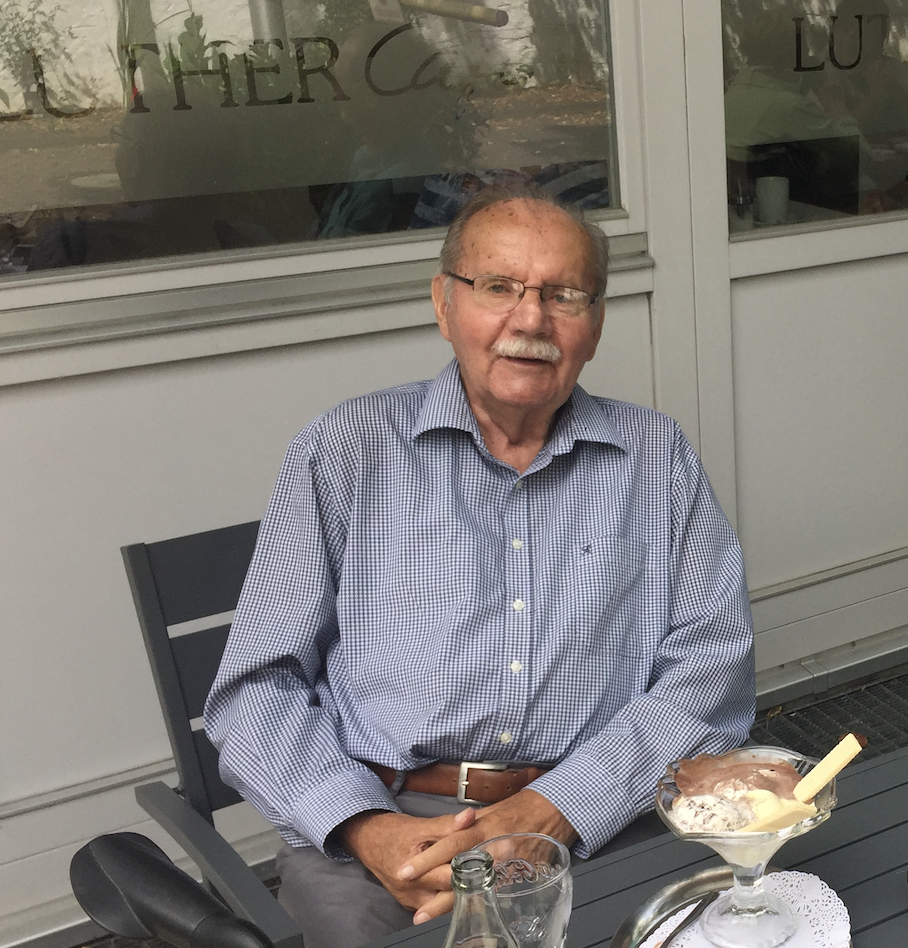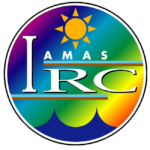
A tribute to Dr. Ehrhard Raschke (1936-2023)
Prof. Dr. Ehrhard Raschke, born in Elstertrebnitz, Germany in 1936, passed away on 24 August 2023 at the age of 87. He was an eminent scientist, a great mentor to his scholars, a prominent scientific leader and facilitator who made outstanding contributions to the fields of satellite meteorology, atmospheric radiation, and water cycle research. He was one of the pioneers of comprehensive science from the micro- to the macroscale, i.e. from understanding and modelling optical properties of individual ice crystals to characterizing Earth’s radiative energy budget and its role in the climate system.
Ehrhard studied geophysics at the Bergakademie Freiberg and at the University of Mainz. He received his PhD in Meteorology from the Ludwig-Maximilians-University (LMU) in Munich with a thesis entitled ‘Analyses of measurements of the satellite TIROS II’ with summa cum laude, supervised by Fritz Möller, who was a pioneer in atmospheric radiation research. The collaboration with Fritz Möller set the path for Ehrhard’s future research. During his time in Munich Ehrhard started his collaboration with American colleagues and was a Postdoctoral resident research associate at NASA GSFC.
In 1971 Ehrhard finished his Habilitation in Meteorology at Ruhr University Bochum with work on radiative transfer calculations coupling atmosphere and ocean. Then in 1973 he became head of the Institute for Geophysics and Meteorology at the University of Cologne. Soon, he established the institute as a well-known center for satellite meteorology, remote sensing, and atmospheric radiation research. At Cologne, besides the initiation of fast radiative transfer models for the then upcoming weather and atmospheric climate simulations, he also expanded his work on the radiation budget at the top of the atmosphere to retrievals of the solar irradiance at the surface from satellite data. One of his first papers on the topic was ‘The determination of the solar radiation budget at the Earth’s surface from satellite measurements’ published in the Meteorologische Rundschau in 1979 by Raschke and Preuss. In 1984 he made important contributions to the first surface solar radiation atlas for Europe issued by the European Commission (Palz et al., 1984). We remember that he already then strongly suggested to make use of the incoming solar energy. He also showed his considerable versatility by becoming a principal investigator for the very first deployment of the German research aircraft Falcon to study the radiative properties of marine stratocumulus clouds. He also extended his research towards the atmospheric boundary layer by establishing an observational network for the urban climate of the City of Cologne including remote sensing and tethered balloons.
From 1989 to his formal retirement in 2001, he first headed the Institute of Physics and later the Institute of Atmospheric Physics, both at GKSS Research Center (which is now the Helmholtz-Zentrum Hereon) in Geesthacht, Germany. During that time Ehrhard Raschke enhanced the capabilities of the institute to observe clouds and radiation. He fostered the acquisition of a satellite tracking and data receiving station, a high frequency cloud radar and a suite of airborne cloud and aerosol particle sondes. Among other projects, these instruments were used to support early studies of an ESA cloud and radiation satellite mission which is nowadays known as EarthCARE mission.
Since his time in Munich, Ehrhard’s research focus was on a better understanding of the atmospheric radiation balance and the quantification of related processes. He began to investigate relative humidity fields (with William Bandeen) and the Earth Radiation Budget (with Tom vonder Haar) using data from the TIROS and Nimbus satellites of NASA. The latter resulted in the seminal study ‘The Annual Radiation Balance of the Earth-Atmosphere System During 1969–70 from Nimbus 3 Measurements’ published in 1973 in the Journal of the Atmospheric Sciences (Raschke, von der Haar, Bandeen and Pasternak).
Ehrhard was one of the co-founders of WCRP’s first project – the International Satellite Cloud Climatology Project (ISCCP), which started in 1983 and still provides condensed but comprehensive cloud information from satellites. Ehrhard continuously supported the project led by Bill Rossow with many scientific contributions.
Ehrhard Raschke’s quest to improve our understanding of cloud-radiative processes included remote sensing and in-situ experiments of clouds and precipitation. Noteworthy is that he always sought international cooperation. During his time in Cologne he led the International Cirrus Experiment (ICE, 1983 -1989) with participants from France, Germany, and UK to better understand the radiative transfer properties of cirrus and their relation to dynamics with larger campaigns in 1987 and 1989 over the North Sea with a research vessel and three aircrafts involved. This effort was extended between 1989 and 1996 by the European Cloud and Radiation Experiment (EUCREX) supported by national and EU funds. Groups from France, UK, Sweden and Germany participated in the experiment. Several campaigns were conducted which also initialized new instrument developments.
During the 1980s well into the 1990s, he further broadened his research interest to encompass the entire energy and water cycles of the atmosphere. He served as a member of the GEWEX (Global Energy and Water Cycle Experiment) Scientific Steering Group from the beginning in 1992 until 1999. After several years of preparatory work at the European and international level Ehrhard succeeded in getting the large experiment BALTEX approved as one of five so-called GEWEX Continental Scale Experiments (CSE). During the 1990-ties Ehrhard led BALTEX and coordinated and concerted European scientists from different fields such as meteorology, hydrology and oceanography. All countries Baltic Sea neighbouring the Baltic Sea participated which once more demonstrated Ehrhard’s skillful and tireless passion for science. Ehrhard also established the International BALTEX Secretariat at GKSS. Even after his retirement in 2001 he kept following developments and achievements and attended BALTEX conferences notably, at the age of 80, the first International Baltic Earth Conference in 2016 in Lithuania.
Getting people together for scientific discussions and debates was always a prime objective of Ehrhard. He regularly co-organized symposia and workshops (e.g. at assemblies of EGS, IUGG, IAMAS, COSPAR and others). He also organized summer schools within the NATO ASI series. World-wide he served as a well appreciated advisor, chair and speaker for national and international communities. Occasionally he also supported activities of local communities.
Ehrhard Raschke’s activities were internationally recognized, and he became a member of the International Radiation Commission (IRC) and its Working Group on Radiation Fluxes (WGRF) in support of the Joint Scientific Committee (JSC) of the World Climate Research Programme (WCRP). In September 2001 Erhard Raschke received the prestigious Georgi Award from the Alfred-Wegener-Foundation for the Advancement of Geosciences at the joint conference of the Meteorological Societies of Austria, Germany and Switzerland. The citation reads “for his accomplishments in measuring and modeling atmospheric radiative transfer processes, for using satellite data in atmospheric research, for his investigation of water cycles in the climate system, and for his initiation and leadership in the BALTEX research program’. Ehrhard has also many publications in peer reviewed journals to his credit. He also took the time to work as editor of two books on ‘Energy and water cycles’ and two books on remote sensing and environmental problems.
After the German reunification Erhard Raschke helped to restructure and rebuild of the meteorological community in the former East Germany. Soon after the opening of the border Erhard Raschke came to several research institutes in the former German Democratic Republic and provided support and advice. In particular, he was instrumental in the re-establishment of the Institute of Meteorology at the University Leipzig and the founding of the new Institute for Tropospheric Research. This personal engagement is corroborated by a few quotes from the many condolences received:
- ‘Ehrhard left one of the best contributions on the radiation and energy balance of the earth, mainly based on satellite observations’.
- ‘Besides his outstanding scientific accomplishments, he spotted important further scientific problems, then he invited younger scientists to work on those problems’.
- ‘Ehrhard had an unbelievable degree of self-discipline. By working with him, one was reminded that one had to have the same degree of the self-discipline’.
Finally, we would like to recall that Ehrhard Raschke was an excellent mentor for his students. He offered his students the involvement in international research thereby preparing them for their own careers in a unique way. Ehrhard Raschke was always seeking new opportunities for scientific development and novel research. He continuously challenged and supported his students by creating opportunities to learn and develop their potential. That was not only very successful it was also rewarding and enjoyable for his disciples. Ehrhard Raschke is remembered by his students as a mentor who helped paving their way into a good career. Ehrhard Raschke has a special place in the hearts of his students.
by European colleagues and former students
